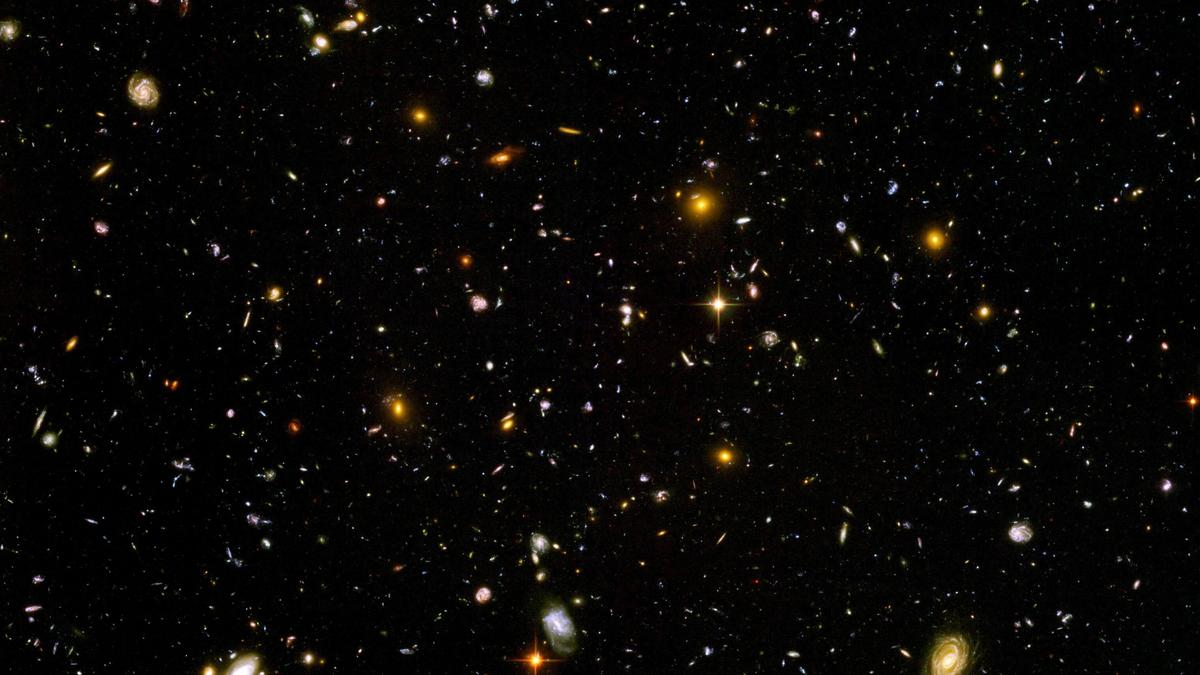The Hubble Ultra Deep Field is an image of a small region of space in the constellation Fornax, composited from Hubble Space Telescope data collected from September 3, 2003, to January 16, 2004.
| Photo Credit: NASA, ESA
A:The universe has no top, bottom or middle and no centre either. Scientists know today that the universe is spreading out in all directions and in all places at the same time. This means galaxies that are 500 lightyears away, 5,000 lightyears away, and 5 million lightyears away are all moving away from the earth. The earth itself is moving away from another object somewhere else.
On a more fundamental level, we often consider the Big Bang to be a central event in space, but this is not true. Our universe is not located inside some larger space (at least to the extent that we can study and prove). Right after the Big Bang, space grew, changed, and evolved everywhere at once.
The human mind is accustomed to a three-dimensional surrounding where specific parts of space begin and end. It is more used to shapes with points and straight lines. Thus, for example, we can say a spherical soap bubble has a centre. But the universe bends space and time and has a shape that is not easily comprehensible by the mind. It has no edges or vertices and thus no centre either.
As the German physicist Werner Heisenberg once said, “Physics does not offer comfort; it offers reality.”
(Shamim Haque Mondal is a researcher in the Physics Division, State Forensic Science Laboratory, Kolkata.)
Published – July 23, 2025 06:00 am IST
